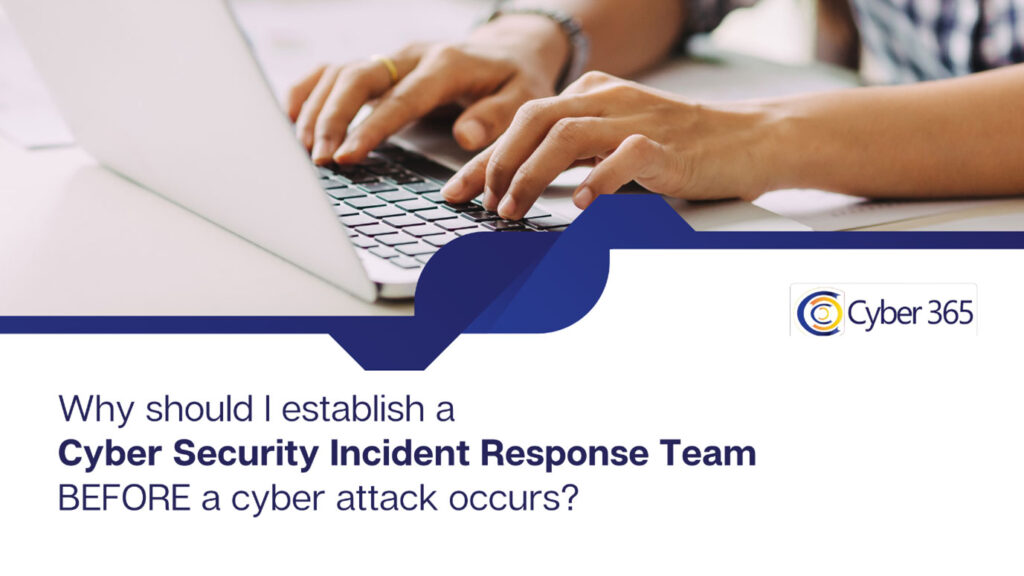Creating a Cyber Security Incident Response Team (CSIRT) Workshop
Creating a Cyber Security Incident Response Team
| Prepare | Protect | Respond |
Is your organisation truly prepared to handle a cyber-attack? Every digital advancement adds convenience, but it also adds risk. When threats come, you need a skilled team ready to defend. Our Creating a Cyber Security Incident Response Team (CSIRT) Workshop is designed to equip your organisation with the skills and strategies to tackle cyber threats head-on.


Because cybersecurity is a priority.
Growing organisations face more than just external threats; they’re often vulnerable from within. Each employee, device, and network connection can open the door to new risks. A strong CSIRT isn’t just a defence strategy; it’s a proactive shield that identifies, assesses, and tackles threats before they can harm your business.
Why Now?
Because reacting to an attack isn’t enough. Once a threat hits, every second counts. With a CSIRT, your team will know exactly how to respond, containing the impact, restoring systems quickly, and securing valuable data. Waiting until after an attack can leave lasting damage—financially and reputationally. A proactive CSIRT strategy shows clients and stakeholders that your organisation values security, integrity, and trust.

What is a CSIRT?
The Cyber Security Incident Response Team (CSIRT) is a key component of an organisation’s security posture. By definition, a CSIRT is a team of individuals who are responsible for responding to computer security incidents. While the term “computer security incident” can be used to describe any type of event that poses a threat to computer systems or data, in practice, most CSIRTs focus on responding to cyber incidents – that is, events that involve some form of malicious activity carried out using digital means.
What Does a CSIRT Do?
A CSIRT assesses threat vulnerabilities and the potential for cyber-attacks. They also assess the damage caused by an attack and are quickly deployed with pre-planned strategies to mitigate the attack and have the organisation up and running again as quickly as possible. Their goal is to prevent further attacks from occurring.


Why should I establish a Cyber Security Incident Response Team BEFORE a cyber attack occurs?
Who should do this course?
- Current and prospective managers; C-level management such as CEO, CE, CIOs, CSOs, CROs, CTO; and project leaders interested in establishing an effective Cyber Team.
- Other staff who interact with Cyber/IT staff would like to understand how the team operates. For example, constituents; higher-level management; media relations, legal counsel, law enforcement, human resources, audit, or risk management staff.
Topics
- Incident management and the relationship to CSIRTs
- Prerequisites to planning a CSIRT
- Creating a CSIRT vision
- CSIRT mission, objectives, and level of authority
- CSIRT organisational issues and models
- Range and levels of provided services
- Funding issues
- Hiring and training initial CSIRT staff
- Implementing CSIRT policies and procedures
- Requirements for a CSIRT infrastructure
- Implementation and operational issues and strategies
- Collaboration and communication issues
What your staff will learn?
- Understand the requirements for establishing an effective Cyber Team (CSIRT)
- Strategically plan the development and implementation of a new Cyber Team.
- Highlight issues associated with assembling a responsive, effective team of computer security professionals
- Identify policies and procedures that should be established and implemented.
- Understand various organisational models for a new Cyber Team
- Understand the variety and level of services that a Cyber Team can provide
Terms and Conditions
- Duration: 1-Day Workshop
-
Delivery Method:
- Face-to-face
- Virtual via Zoom
-
Number Participants:
- Minimum Number: 6 People
- Maximum Number: 20 people
- Cost: $1000 NZD/per person (If more than 10 price drops to $800 NZD per person)
- Travel: Additional costs may apply for face-to-face workshops.
- TermsBooking and Cancellation Policy
Book Your Team Today
Cyber-attacks aren’t slowing down. Equip your organisation with the skills, knowledge, and confidence to face any threat. Book the Creating a Cyber Security Incident Response Team Workshop and build a team that doesn’t just react—they’re ready.
